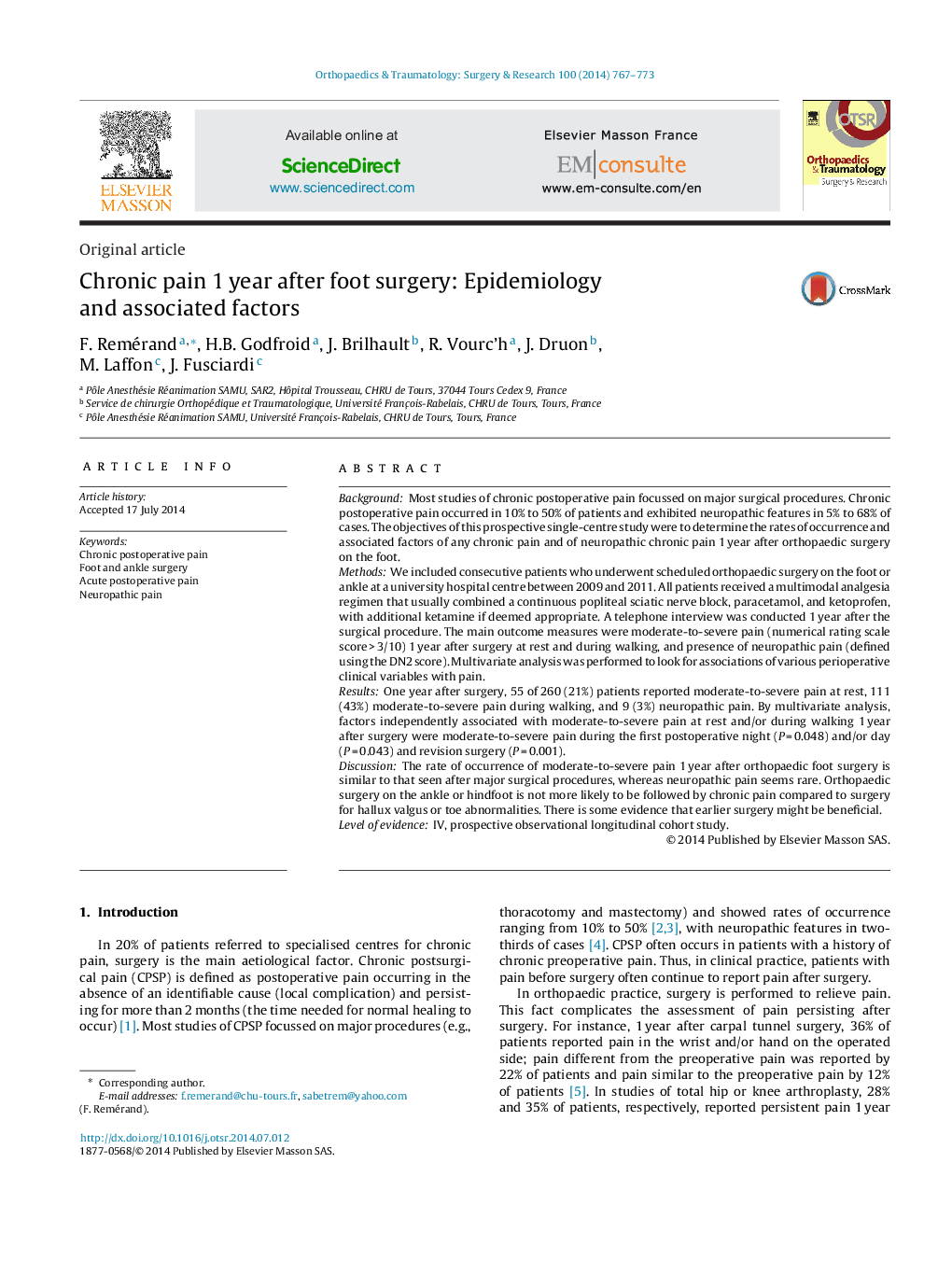| Article ID | Journal | Published Year | Pages | File Type |
|---|---|---|---|---|
| 4081410 | Orthopaedics & Traumatology: Surgery & Research | 2014 | 7 Pages |
BackgroundMost studies of chronic postoperative pain focussed on major surgical procedures. Chronic postoperative pain occurred in 10% to 50% of patients and exhibited neuropathic features in 5% to 68% of cases. The objectives of this prospective single-centre study were to determine the rates of occurrence and associated factors of any chronic pain and of neuropathic chronic pain 1 year after orthopaedic surgery on the foot.MethodsWe included consecutive patients who underwent scheduled orthopaedic surgery on the foot or ankle at a university hospital centre between 2009 and 2011. All patients received a multimodal analgesia regimen that usually combined a continuous popliteal sciatic nerve block, paracetamol, and ketoprofen, with additional ketamine if deemed appropriate. A telephone interview was conducted 1 year after the surgical procedure. The main outcome measures were moderate-to-severe pain (numerical rating scale score > 3/10) 1 year after surgery at rest and during walking, and presence of neuropathic pain (defined using the DN2 score). Multivariate analysis was performed to look for associations of various perioperative clinical variables with pain.ResultsOne year after surgery, 55 of 260 (21%) patients reported moderate-to-severe pain at rest, 111 (43%) moderate-to-severe pain during walking, and 9 (3%) neuropathic pain. By multivariate analysis, factors independently associated with moderate-to-severe pain at rest and/or during walking 1 year after surgery were moderate-to-severe pain during the first postoperative night (P = 0.048) and/or day (P = 0.043) and revision surgery (P = 0.001).DiscussionThe rate of occurrence of moderate-to-severe pain 1 year after orthopaedic foot surgery is similar to that seen after major surgical procedures, whereas neuropathic pain seems rare. Orthopaedic surgery on the ankle or hindfoot is not more likely to be followed by chronic pain compared to surgery for hallux valgus or toe abnormalities. There is some evidence that earlier surgery might be beneficial.Level of evidenceIV, prospective observational longitudinal cohort study.
